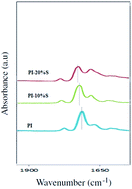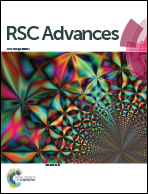Olefin–paraffin separation performance of polyimide Matrimid®/silica nanocomposite membranes†
Abstract
In this study, the performance of polyimide Matrimid® membranes in the separation of ethylene/ethane and propylene/propane was improved by silica nanoparticles. Further, the plasticization resistance of glassy polyimide was enhanced by silica nanoparticles. The silica nanoparticles were prepared using a sol–gel method. Pure and hybrid membranes were prepared by a solution-casting method and characterized using Fourier Transform Infrared Spectroscopy (FTIR), Scanning Electron Microscopy (SEM), Thermal Gravimetric (TGA) Analyses and differential scanning calorimetry (DSC). The results from membrane characterization indicated good distribution and connection of the particles to the polymer matrix. The findings from the gas separation tests showed that the addition of silica nanoparticles to the polymer caused an increase in olefin permeation and small changes in paraffin permeation, and consequently, an increase in the C2H4/C2H6 and C3H6/C3H8 selectivity. The selectivity of C3H6/C3H8 and C2H4/C2H6 was increased from 9.05 to 18.03, and from 3.25 to 6.13 respectively. The findings revealed that by adding silica nanoparticles up to 10 wt%, the plasticization pressure of propylene was delayed from 4 to 6 bar in the pure membrane.


 Please wait while we load your content...
Please wait while we load your content...